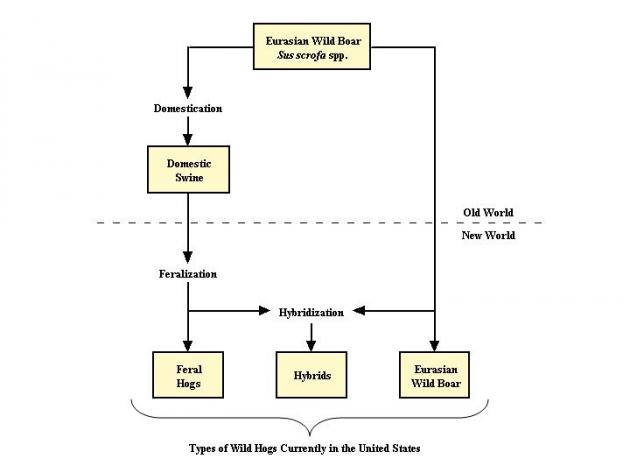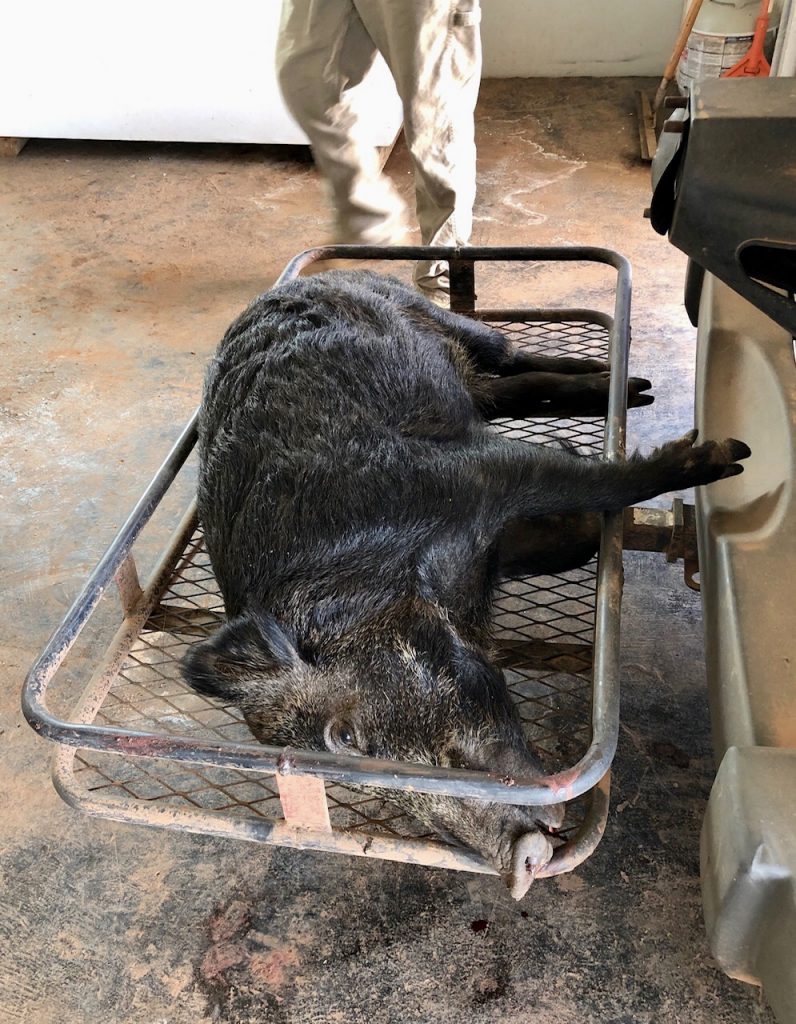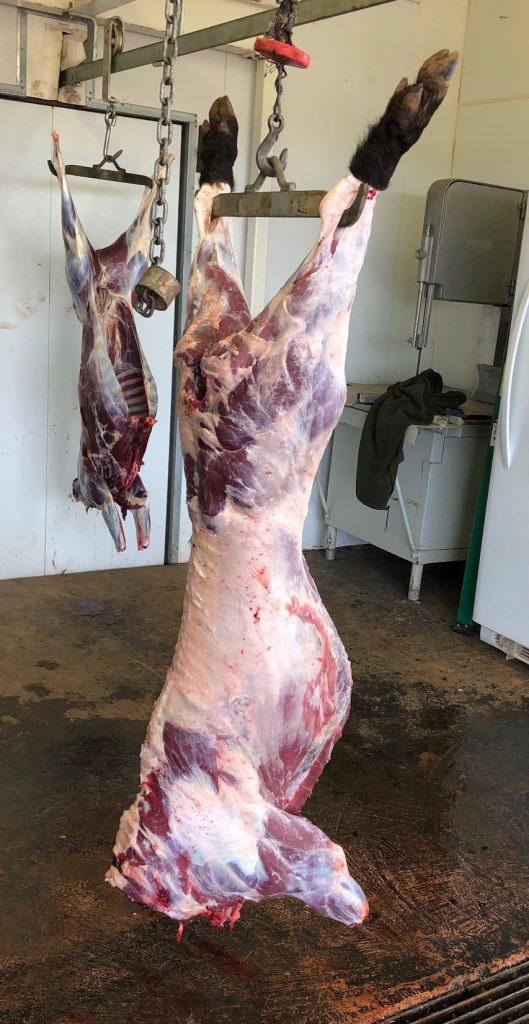
If you read about my recent hunting trip to Texas, you’ll know that I harvested my first feral hog while on that trip. Hogs are not much of a thing in my home state, so I didn’t know much about them. This being my first trip to Texas, combined with a news story about a woman recently killed by feral hogs outside a Texas home, I decided to do some reading up on the ongoing porcine plague.
I started with the USDA, and then proceeded to the webpages for a few individual states. This link provides a lot more in depth history for those who are interested.
History
As of 2018 there were an estimated 6 million feral swine in the U.S. spread across at least 35 states. The USDA notes that pigs/swine were first introduced to the Americas in the 1500’s by explorers and settlers who used “free range” farming practices. Those practices resulted in certain numbers of unrecovered livestock, which continued to breed in the wilds of the New World. Those pigs then interbred with Eurasian wild boars that were introduced for sport hunting in the 1900’s (great idea, guys). Unfortunately, nobody at the time really understood the problems with invasive species.
Technically, both types of hogs come from the species Sus scrofa, but one branch was domesticated and then went feral again, and the other branch was never domesticated. I’m a nerd about these things, so I’m including an illustration from one of the above websites. Bottom line is that there are three types of hogs running around out there now – the feral type, the wild type, and hybrids of the two.

Damage
Wild pigs have been estimated to cause $1.5 billion worth of damage to agriculture and the environment yearly. This is not an insignificant problem.
In forested areas feral pigs compete with native species for food and resources. They may also carry diseases that infect domestic livestock and humans – such as Brucellosis. They gobble up hard mast before it can germinate into tree seedlings, and their rooting behavior uproots seedlings that do germinate. They prey upon the eggs of nesting birds and occasionally eat newborn game mammals.
In farm fields feral pigs trample crops and create wallow holes big enough to damage farm equipment. They contaminate water supplies and also occasionally prey upon newborn livestock.
Population Control
With the average litter size being 4-6 piglets (up to 12 is possible), and sows capable of producing more than one litter a year, beginning when they are less than a year old themselves, the population of wild hogs can quickly get out of control. The resources I read stated that the removal of 50-70% of a hog population yearly is necessary to keep their numbers stable to decreasing. That largely doesn’t happen. Thus, we have an ever increasing invasive species problem.
Complicating the population issue is the adaptability of wild pigs. They can survive in a variety of environments, will eat almost anything, and they have almost no natural predators.
There are no approved poisons or “birth control” methods currently available for use against wild swine. Trapping and hunting seem to be the most effective controls on feral hog populations, but even those measures struggle to keep up. Hogs are intelligent animals and they learn from their human interactions. Too much daytime hunting pressure can force them into nocturnal activity. Some gear heads may be happy that they then have an excuse to use their night vision toys, but none of that stuff is cheap. Some people even hunt hogs out of helicopters, but that isn’t cheap either.
My Hunt
While on my ranch trip, I was advised that with hogs, a head shot is the way to go. Apparently a heart/lung shot placed as for a whitetail will result in a hog running for quite a distance before he realizes he is dead, often rendering him unrecoverable. I was advised to aim for the ear instead. That advice proved to be sound for me, as my first hog dropped in place with a an ear shot from my Aero Precision M5 .308. It still took his nervous system awhile to realize he was dead, because his “air running” movements fooled me into taking a second shot for good measure. Regardless, he stayed where I dropped him – no tracking needed. For a novice, that was a great feeling.

Charging to Hunt
I used to wonder why, if wild pigs were such a problem, that so many ranchers charged for the privilege of hunting them. But I now understand a little better that the landowners are just trying to get a little something back in exchange for the damage, lost feed, etc. that the hogs have caused in the first place. Plus hunters themselves can sometimes cause unintended damage to property or crops while they are on the ranch that isn’t discovered until later. This gives the property owner a little recompense. Then there are liability issues to be considered, all of which makes for a complex situation and renders what at first glance appears to be an easy “solution” into a not-so-easy one.
But even at a charge-for-hunt, it’s not necessarily a bad deal. I did a quick internet search and found that the cost to bulk order just half of a domestic pig from a local farm runs in the 4 to 5 dollar-a-pound range. Even with a property owner charge of $100 per wild hog, a hunter still gets cheaper meat than could be had by buying a farm pig. Granted, I am a neophyte and outsider, but from my angle it looks like everybody still wins.

Pork chops
As I have presented here, there are lots of reasons that feral hogs are a bad thing and lots of reasons that hunting them is a good thing – not least of which is sausage and pork chops!
So what are you still waiting for?



